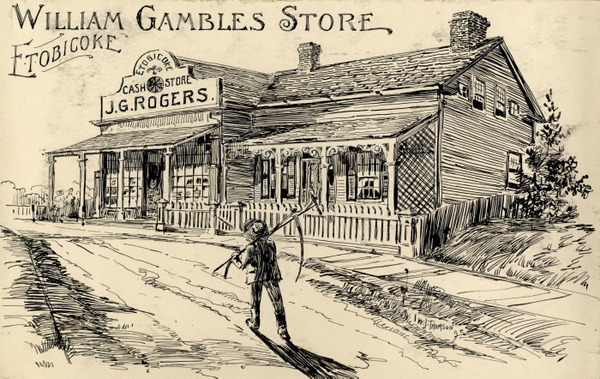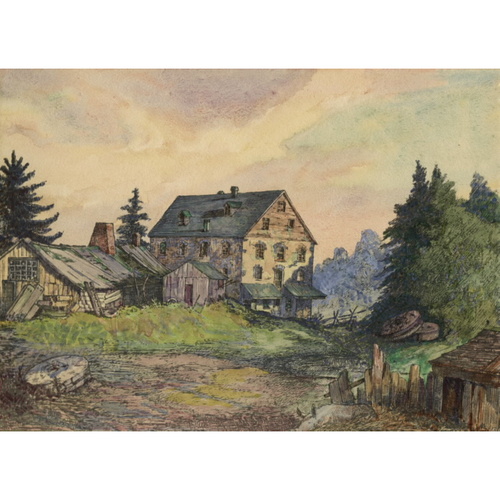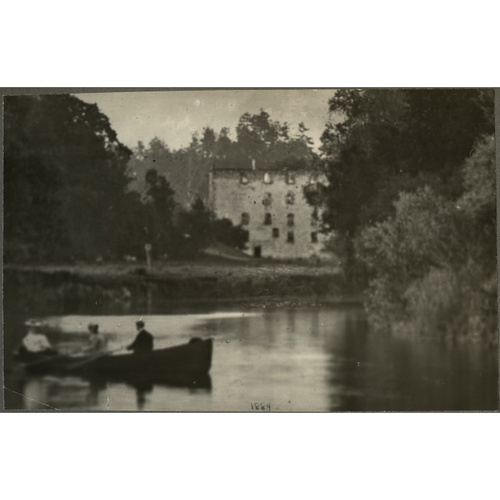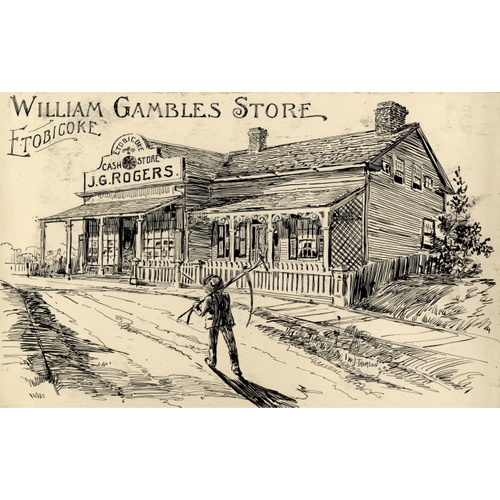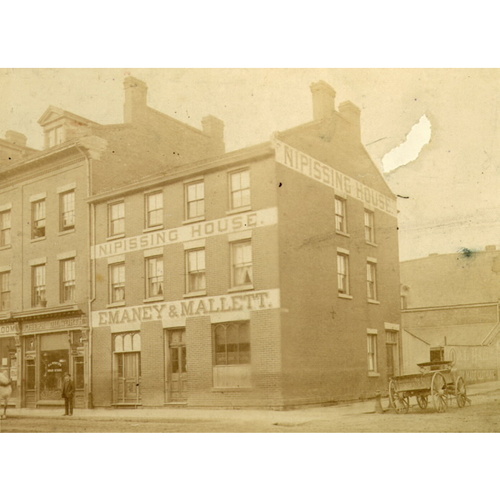GAMBLE, WILLIAM, merchant, miller, and land developer; b. 5 Aug. 1805 at Kingston, Upper Canada, son of John Gamble, surgeon of the Queen’s Rangers, and Isabella Elizabeth Clarke; m. 10 Dec. 1833 Elizabeth Bowles Brenchley, and they had one daughter; d. 20 March 1881 in Toronto, Ont.
Educated in Kingston, William Gamble came to York (Toronto) in 1820 with his widowed mother and younger brother, Joseph Clarke Gamble. William became a partner with another brother, John William*, in a general store about 1822 and its sole owner in 1827. He sold it to Henry Hamilton in 1828. Taking Thomas William Birchall as partner, Gamble opened a general store and a commission agency for grain, flour, pork, and ash, exporting the surplus to Britain either on commission or on his own account, and importing manufactured goods. In 1835 he sold his share in the store to Birchall and bought the King’s Mill on the Humber River, in Etobicoke Township, from Thomas Fisher* with whom he continued to have many business dealings. The establishment, which Gamble renamed Milton Mill, consisted of a sawmill, nail factory, inn, stables, and store. In 1837–38 Gamble added a grist-mill and distillery, expanded the stables, and built a hotel in place of the inn. The grist-mill was destroyed by fire in 1847 and rebuilt on a larger scale. Gamble also acquired ships to transport his neighbours’ excess cereals and his own and Fisher’s flour to Toronto. Here he and a partner had established the Milton Depository, apparently a combined granary and store for the sale of British products. Gamble also advertised various fine qualities of wheat seed. He exported to England in ships which he either owned outright or in which he held substantial shares. In 1840 he bought a lot at the mouth of the Humber, where, in association with Fisher, he built a wharf, stores, and a house. In 1843 he was placed in charge of building a swing bridge at the mouth of the Humber; he rebuilt it in 1866 probably to handle the increasing traffic. In 1846 he leased a woollen mill on the Humber at Dundas St, purchasing it in 1851 from Duncan Murchison with whom he had participated in developing the village of Milton (renamed Lambton in 1840 and now in Etobicoke).
From 1835 Gamble was associated with his brother John William in the development of Mimico, south of Lambton, on lands granted to their father, where John William had made his home. William also leased the surrounding clergy reserves. As pathmaster of Etobicoke Township and on his own initiative, he built roads, some of which he planked and which helped to open the township.
His milling business was crippled by the repeal of the British Corn Laws in 1849 and a flood in 1850 which washed out most of the mill dams on the Humber. Although practically bankrupt, he continued his milling operations on a diminished scale until 1862 when the Bank of Upper Canada foreclosed his mortgages. He presumably continued to live at Milton Mill and, in 1873, as one of the trustees of John William’s bankrupt properties, he drew up new plans for the development of Woodbridge on the Humber in Vaughan Township.
Over the years William Gamble had held a number of public offices. In 1833 he was appointed to the town of York Board of Health, established that year in anticipation of an outbreak of cholera. He was made a justice of the peace the same year and served on the Court of Quarter Sessions in 1842. He refused a commission in the 3rd York Regiment of militia in 1836, probably because his business enterprises required so much of his time. Gamble became a director of the Bank of Upper Canada in 1829, and of the British America Fire and Life Assurance Company in 1834. In 1846 he donated the site for an Anglican church, St George’s-on-the-Hill (Islington), and served as warden from 1846 to 1848 and from 1851 to 1852. His financial difficulties did not diminish the business community’s respect for him: he was active in founding the Bank of Toronto, incorporated in 1855, and was vice-president of its provisional board.
William Gamble’s career illustrates the important role of the merchant miller who, by providing a base for one or two villages and, with or without government aid, building roads and bridges, helped to open up townships for rapid settlement. The repeal of the Corn Laws and the new transportation patterns established by the developing railway networks had much to do with placing this kind of pioneer enterprise in jeopardy.
[MTL, Humber Valley Arch., contains copies and extracts of documents in the PAC, AO, and York County Registry Office and Surrogate Court (Toronto), as well as extracts from newspapers, gazetteers, and related books. There is a card index and a typescript copy of Norah Story, “The merchant millers of the Humber.” n.s.]
Cite This Article
Norah Story, “GAMBLE, WILLIAM,” in Dictionary of Canadian Biography, vol. 11, University of Toronto/Université Laval, 2003–, accessed March 31, 2025, https://www.biographi.ca/en/bio/gamble_william_11E.html.
The citation above shows the format for footnotes and endnotes according to the Chicago manual of style (16th edition). Information to be used in other citation formats:
| Permalink: | https://www.biographi.ca/en/bio/gamble_william_11E.html |
| Author of Article: | Norah Story |
| Title of Article: | GAMBLE, WILLIAM |
| Publication Name: | Dictionary of Canadian Biography, vol. 11 |
| Publisher: | University of Toronto/Université Laval |
| Year of revision: | 1982 |
| Access Date: | March 31, 2025 |


